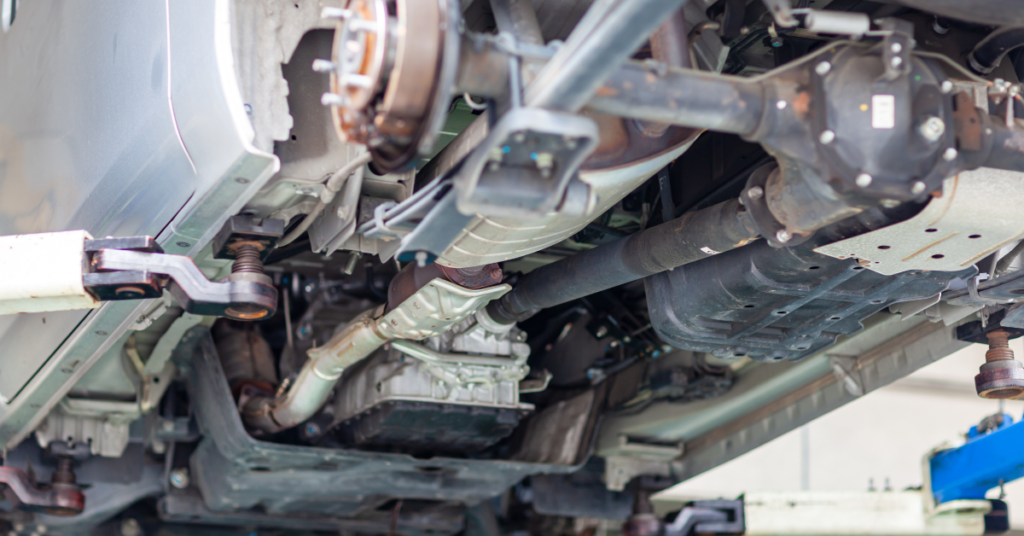
The P0430 Mercedes code is a common OBD-II diagnostic trouble code that indicates a malfunction in the catalytic converter’s efficiency of bank 2.
This code is specifically related to Mercedes-Benz vehicles and can be found in various models such as C-Class, E-Class, S-Class, and more.
Understanding the P0430 code and its implications is essential for both vehicle owners and automotive professionals to resolve issues in other car brands.
Contents
What is the P0430 Mercedes Code?
The P0430 code is part of the OBD-II system, which is a standardized system used by vehicles to diagnose and report any issues or malfunctions. Specifically, the P0430 code indicates that the catalyst system efficiency of bank 2 is below the acceptable threshold.
Bank 2 refers to the side of the engine that does not contain the number one cylinder.
When the catalytic converter fails to operate efficiently, it can lead to increased emissions and decreased fuel economy. The P0430 code serves as a warning sign that there is an issue with the catalytic converter, and prompt action is necessary to address the problem.
Unraveling the mysteries behind the P0430 code in your Mercedes might equip you with the skills needed to tackle the P0420 code. It’s a journey worth taking.
Symptoms of P0430 Code
When a Mercedes-Benz vehicle’s onboard computer detects the P0430 code, it triggers the Check Engine Light (CEL) to illuminate the vehicle’s dashboard.
This serves as an indication to the driver that there is a problem with the catalytic converter’s efficiency.
In addition to the illuminated CEL, there might be other symptoms associated with the P0430 code, such as:
Decreased engine performance
The vehicle may experience reduced power or sluggish acceleration. This can be particularly noticeable during acceleration or when climbing steep hills.
Increased fuel consumption
A faulty catalytic converter can cause the engine to burn fuel less efficiently, leading to increased fuel consumption. This can result in lower miles per gallon (MPG) and higher fuel costs for the vehicle owner.
Smell of rotten eggs
A malfunctioning catalytic converter can produce a strong sulfur smell, resembling rotten eggs. This odor is caused by the presence of hydrogen sulfide gas in the exhaust.
Failed emissions test
The P0430 code often leads to a failed emissions test as the catalytic converter is responsible for reducing harmful emissions.
If the catalytic converter is not functioning properly, it may not be able to effectively reduce pollutants, resulting in higher emissions levels.
If any of these symptoms are observed, it is crucial to address the issue promptly to avoid further damage to the vehicle’s engine and exhaust system.
Possible Causes of P0430 Code
The P0430 code can be triggered by various underlying issues. It is essential to diagnose the root cause accurately to resolve the problem effectively. Some common causes of the P0430 code in Mercedes-Benz vehicles include:
Faulty catalytic converter
A failing or deteriorating catalytic converter can trigger the P0430 code. Over time, the internal components of the catalytic converter can wear out, leading to decreased efficiency.
This can be caused by factors such as age, mileage, or exposure to contaminants.
Oxygen sensor malfunction
The oxygen sensors in the exhaust system play a crucial role in measuring the oxygen levels and ensuring optimal fuel-air mixture. If one or more oxygen sensors are faulty, it can lead to a false P0430 code.
These sensors may become contaminated or fail due to age or exposure to extreme conditions.
Exhaust leaks

Leaks in the exhaust system, such as cracked pipes or damaged gaskets, can cause incorrect readings in the oxygen sensors and trigger the P0430 code.
These leaks can allow unfiltered air to enter the exhaust system, affecting the accuracy of the sensor readings.
Engine misfire
A misfiring engine can produce excessive amounts of unburnt fuel, which can lead to an inefficient catalytic converter and trigger the P0430 code. Common causes of engine misfires include faulty spark plugs, ignition coils, or fuel injectors.
Diagnosing and Resolving the P0430 Code
When faced with the P0430 code, it is best to consult a qualified automotive professional who can accurately diagnose the issue. They will use specialized diagnostic tools and techniques to identify the root cause of the problem.
Here are some common steps involved in diagnosing and resolving the P0430 code:
Visual inspection
The technician will perform a visual inspection of the exhaust system, checking for any visible signs of damage, leaks, or loose connections. They will also inspect the catalytic converter for any physical damage or deterioration.
Scan tool analysis
Using an OBD-II scan tool, the technician will retrieve the trouble codes stored in the vehicle’s onboard computer. They will analyze the data to pinpoint the specific cause of the P0430 code.
The scan tool can provide valuable information about sensor readings, fuel trims, and other parameters.
Oxygen sensor testing
The oxygen sensors will be tested to ensure they are functioning correctly. This may involve measuring voltage outputs and comparing them to manufacturer specifications. If a faulty oxygen sensor is identified, it will need to be replaced.
Catalytic converter inspection
If the oxygen sensors are functioning correctly, the catalytic converter will be inspected for any signs of damage, such as physical deterioration or blockage.
The technician may use a borescope or perform a backpressure test to assess the condition of the converter.
Repair or replacement
Once the root cause has been identified, the necessary repairs or replacements will be carried out. This may involve replacing faulty oxygen sensors, repairing exhaust leaks, or replacing the catalytic converter if necessary.
The technician will ensure that all components are properly installed and functioning correctly.
It is crucial to note that attempting to diagnose or repair the P0430 code without proper knowledge and tools can lead to further damage or inaccurate diagnosis. Therefore, it is highly recommended to seek professional assistance for this specific issue.
Conclusion
The P0430 code in Mercedes-Benz vehicles indicates a malfunction in the catalytic converter’s efficiency of bank 2. Understanding the symptoms, possible causes, and diagnostic steps associated with this code is crucial for effective resolution.
By promptly addressing the issue and taking preventive measures, vehicle owners can ensure the proper functioning of their catalytic converter, reduce emissions, and maintain optimal engine performance.
Seeking the assistance of a qualified automotive professional is highly recommended for accurate diagnosis and repairs related to the P0430 code.
Frequently Asked Questions
1. What does the P0430 code indicate?
The P0430 code indicates that the catalyst system efficiency of bank 2 in a Mercedes-Benz vehicle is below the acceptable threshold. It specifically points to an issue with the catalytic converter.
2. What are the symptoms of the P0430 code?
Some symptoms associated with the P0430 code include a illuminated Check Engine Light (CEL), decreased engine performance, increased fuel consumption, smell of rotten eggs, and potential failure of emissions tests.
3. What are the possible causes of the P0430 code?
The P0430 code can be triggered by a faulty catalytic converter, oxygen sensor malfunction, exhaust leaks, or engine misfire.
4. How can the P0430 code be diagnosed and resolved?
To diagnose and resolve the P0430 code, it is best to consult a qualified automotive professional. They will perform a visual inspection, use an OBD-II scan tool for analysis, test the oxygen sensors and inspect the catalytic converter.
Repairs or replacements will be carried out based on the identified root cause.



